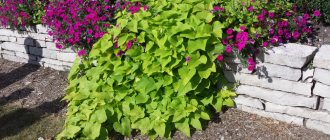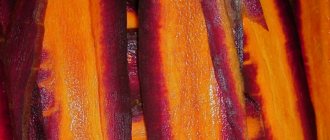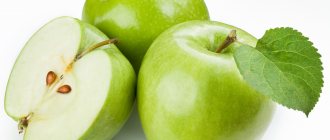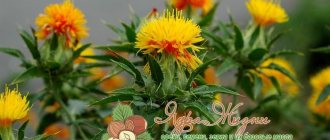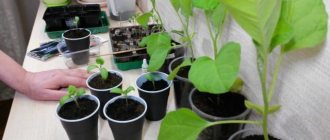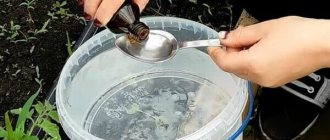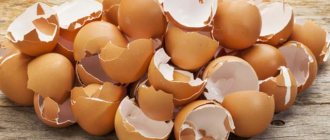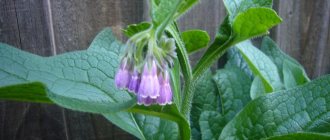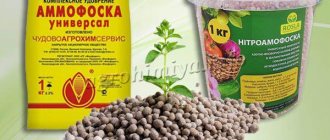Category: Popular brands Reading time: 10 min · Views: 7,602
Many plants are more profitable and practical to propagate by cuttings rather than by seeds. After all, you still need to obtain the seeds, and the cutting method allows you to select in advance the desired shoot with acceptable parameters. Agricultural crops are also propagated by cuttings. To solve problems arising with vegetative propagation at the intersection of agronomy and biochemistry, the drug Kornevin was developed.
Mechanism of action and release form of the biostimulant for plants
The root formation stimulator is considered an analogue of the plant hormone heteroauxin. It is made from idolylbutyric acid (IBA) and is in a convenient form for absorption by plants. When transplanting and cuttings, all crops experience a shortage of this particular substance. "Kornevin, SP" helps:
- awakening dormant buds;
- increasing the survival rate of seedlings;
- root formation during cuttings;
- revitalization of bulbs when forcing flowers;
- activation of growth and formation of roots.
IBA, entering the soil and onto the plant, irritates its tissues that cover the stem or trunk, thereby stimulating the creation of new cells and roots.
The drug is available in the form of a whitish powder, packaged in plastic bags of 3, 4, 5, 10 and 30 grams. After opening the package, it is recommended to pour it into a dry glass container and store it in a place protected from light.
Composition of the drug
Before reading the instructions for use of “Kornevin, SP” (5 g), let’s find out what useful substances, in addition to IBA for the plant, are contained in its composition. These include the following macro- and microelements necessary for the natural growth and development of crops:
- Phosphorus accelerates plant growth and fruit ripening, strengthens the immune system, improves resistance to the influence of negative conditions and pests, increases productivity, and improves taste.
- Potassium increases the rate of nitrogen absorption and the strength of plant tissues, protein formation, and reduces the presence of nitrates.
- Molybdenum helps neutralize nitrates. Participates in carbohydrate, phosphorus and nitrogen metabolism, synthesis of chlorophyll and vitamins.
- Manganese is necessary for the plant to grow quickly. It is involved in the processes of oxidation and reduction, respiration and photosynthesis. Increases the ability of plant tissues to retain water, accelerates overall development, and has a positive effect on fruiting. Manganese enhances the synthesis of vitamin C and increases the sugar content in fruits.
The root formation stimulator has a mild, long-lasting effect. Application according to the instructions “Kornevina, SP” (5 g) will contribute to a high yield.
Advantages and disadvantages of the drug
Like any other product that can help a plant quickly grow its root system, a drug based on ICA has negative and positive aspects. Its advantages are as follows:
- Strengthens the immunity of garden, vegetable and flower crops.
- Quickly forms and strengthens the root system.
- Actively influences the production of friendly shoots from seed material.
- Increases endurance and rapid adaptation of plants after transplantation.
- When planting cuttings, it accelerates the formation of roots.
The disadvantages include:
- In case of overdose and non-compliance with the instructions for use of “Kornevin, SP” (5 g), the effect on plants is negative: growth slows down and horse rot is caused.
- Poisoning of animals and humans if ingested.
- Loss of properties of unused solution and unsealed powder.
- The need for simultaneous use of fertilizers to feed plants.
The product has a beneficial effect on all plants, but requires mandatory compliance with safety and dosage rules.
Indications for use
The drug, made on the basis of idolylbutyric acid, is not a fertilizer, but only activates the development of the root system of plants. This tool is used:
- to speed up seed germination;
- speeding up seedling growth;
- acceleration of root formation during cuttings;
- rapid rooting of plants after transplantation;
- stimulating the growth of weakened and diseased plants;
- developing endurance to temperature changes, drought and waterlogging of the soil;
- increasing productivity.
"Kornevin, SP": instructions
The drug belongs to the third class of danger. The powder is volatile, so it should be used outdoors, on a veranda, on a balcony or in a ventilated room. When working, you must use rubber gloves, a plastic apron, a respirator or gauze bandage, and goggles. If it gets ingested, take activated carbon at the rate of one tablet per 10 kg of body weight and drink plenty of water, then consult a doctor. In case of contact with eyes and dermis, rinse these parts of the body with running water. Let's consider the use of the drug:
- How to use “Kornevin, SP” in dry form? To do this, dust the roots, cuttings, and leaves of flower plants. If the surface to be treated is small, it is simply dipped in powder, after which the excess is shaken off. After processing, the plant, leaf or cutting is placed in a soil substrate. Using a grafting stimulation agent, the sections are processed immediately before joining. Often, a fungicide is added to the powder to protect the plant from bacteria, keeping a ratio of 10:1 (10 parts growth stimulator and one part fungicide).
- Application of an aqueous solution - it is used for seedlings of vegetables, flowers and shrubs, and it is also used to treat planting material: seeds, bulbs, tubers. During the growth phase, the plants are watered with the solution. How to breed "Kornevin, SP"? Manufacturers recommend the following concentration: 1 g of powder per liter of water or 5 g (teaspoon) per 5 liters of water. The solution is prepared immediately before use. During storage, it loses its beneficial properties. Plants are watered at the root immediately after planting and three weeks after it. Planting material is soaked overnight before planting.
Thanks to the growth stimulator, the impact of adverse factors is significantly reduced. The conditions specified in the instructions must be observed so as not to harm people and plants.
Precautions when working with Kornevin
Kornevin belongs to hazard class 3. Thus, it is low-hazard for humans and animals, and is completely non-toxic for plants. It is not volatile, not caustic, but when working with it you still need to wear a mask, gloves and thick clothing. The containers for preparing the product must be non-food grade, specifically designated for the preparation of solutions. During breeding, do not smoke, drink or eat, wash your hands and face after work.
Kornevin has a third class of hazard for humans, which means that the substance is low toxic. However, there is a risk of getting poisoned, and therefore you need to follow certain safety rules:
- do not smoke, eat or drink water while working with the powder and solution;
- do not use kitchen utensils to mix components;
- you need to work with gloves, protect your respiratory organs with a cotton-gauze bandage;
- upon completion of work, wash your hands with soap;
- Keep the product out of the reach of children.
It is recommended to burn or dispose of empty containers in accordance with regulations. In case of accidental ingestion, you should rinse your stomach, drink activated charcoal, and if you feel worse, consult a doctor.
The method of using Kornevin is specified in detail in the instructions. It should be strictly followed to achieve a positive result. The substance must not be allowed to come into contact with the mucous membranes of internal organs or the skin, so you need to work with disposable gloves, a respirator, and use a cape to protect other open areas of the body. Personal protective equipment and powder packaging must be disposed of after completion of the procedure.
When using the rooting agent “Kornevin” in your garden plot, you must follow the dosage. Exceeding the amount of the applied drug may cause the roots to rot, growth will stop, and the crop will die. Detailed instructions on how to dilute Kornevin, how much and how to apply, are located on the packaging.
To prevent an overdose of the bioactivator, it is recommended to mix it with pharmaceutical charcoal in equal proportions.
Application of biostimulator solution
To water plants and treat planting material of tubers, seeds and bulbs, use a 0.1% solution of “Kornevin”. How to breed? Use 1 g of the drug per liter of water. For different types of crops, the following standards are applied, which are indicated in the table.
| Watering | Dosage per root (ml) |
| Fruit tree seedlings | 2000 |
| Shrub seedlings | 300 |
| Vegetable seedlings | 60 |
| Flower seedlings | 40 |
The prepared solution cannot be stored and is used immediately. It is not recommended to violate the dosage; this has a negative effect on the plants.
How and how long is Kornevin stored?
The prepared solution is applied immediately. Cannot be stored. The container in which the solution was contained must be thoroughly rinsed and packaged so that children or pets do not have access to it.
As a rule, each package of the Kornevin stimulant has an expiration date marked. However, its effect applies exclusively to the packaged material, in other words, until the box is opened. When the mixture has already been opened, it is necessary to place it in a cool place, away from light. The box must be tightly closed.
The room where the opened box is stored must be dry. When all requirements are met, the powder can be stored for up to 6 months.
When the powder begins to harden or a drop of water gets on it, it should be disposed of environmentally.
Timing and technology of treatment with a growth stimulator when growing tomatoes
The terms of use of the drug containing idolylbutyric acid are associated with the main periods for caring for tomatoes:
- When preparing seeds for sowing, they are selected, disinfected and soaked in a preparation for two to six hours before planting in the ground.
- Picking plants. The preparation “Kornevin, SP” for tomato seedlings, when transplanting them into separate containers, is used in dry form, powdering the root system or watering the planted sprout with the solution.
- Transplantation to a permanent place. Each hole with a planted plant is watered with a liquid solution of a growth stimulator.
- Formation of ovaries. Before starting this process, all plants are watered with the drug to improve the formation of ovaries and increase productivity.
Seedlings treated with the drug take root well, reducing the risk of disease. Tomatoes become resistant to temperature changes.
It should be noted that about 60 ml of biostimulator solution can be used for each tomato bush.
Processing Features
The ability to carry out treatment with dry or liquid Kornevin provides an advantage. But there is also a risk of killing the plant if doses are exceeded. Such cases often occur if you use undiluted powder.
Moreover, dipping the roots is always done wet. To understand when it is better to use pollination, dipping or watering, you can consider the recommendations of amateur and specialist gardeners.
In the garden and vegetable garden
Kornevin for seedlings is a life-saving substance. In addition to the fact that the young seedling experiences stress due to transplants, a constant lack of heat and microelements, it is weak and the immune system cannot cope. It is especially important to use the product for grape cuttings or tomato seedlings.
Be sure to apply Kornevin in northern regions and places where there is not enough light and heat. By the growing season, the roots will actively absorb beneficial microelements from the soil. This action provides an advantage for thuja and ornamental plants when planted in the ground.
In sunny, southern places, Kornevin is also useful. But it is used for irrigation. Working mixture: 1-2 tbsp. l. for 1 liter of water. Spray carefully. The maximum dosage per plant is from 15 to 45 ml.
Kornevin for indoor flowers
Indoor flowers, like those in the garden, require regular care. Sunlight and temperature play a big role. But in winter, when the vegetative period also passes in certain species, it is necessary to make up for the deficiency.
For flowers, Kornevin will come to the rescue. It is recommended to spray with a standard prepared solution.
For rose cuttings and decorative bulbous flowers, the roots are pollinated and planted in this form in the ground. To make the formation of roots on cuttings safe, remember to use a mixture of coal and Kornevin. Thanks to this method, the root system of the young plant will be protected.
For trees
For trees and bushes, productivity is extremely important. To increase fruiting, there is a dosage diagram for dilution and watering. All events with Kornevin must take place after sunset. Follow the application rates:
- young tree - 1-1, l of mixture;
- mature tree (determined by fruiting) - up to 3 liters of solution;
- a bush that regularly produces crops – half a liter;
- recently planted or young bush - 200-250 ml.
Using the drug when picking tomatoes
Tomato seedlings begin to be transplanted from a common container into separate cups when two true leaves appear on the bush. For this:
- The plants are watered the day before.
- The prepared container is filled with fertile loose soil and moistened.
- Using a fork, remove the tomatoes from the box and shorten the root by a third of its length to increase the growth of lateral branches.
- Make a hole in a cup of soil with your finger and plant a bush, fill the hole with soil and compact it a little, making a small depression near the stem.
- How to dilute “Kornevin, SP” for watering seedlings is indicated in the instructions. You need to take one gram of the substance per liter of water and pour 60 ml of solution under each bush.
It should be remembered that an overdose has a negative effect on the plant, because in stressful conditions, such as pickling, it itself produces phytohormones.
Features of using root formers for seedlings
The root growth stimulator can be used for any seedlings, both flower plants and agricultural crops. It is especially recommended to treat seedlings when the weather is unfavorable, cold and it is not possible to plant them in open ground for a long time. According to the instructions for use, “Kornevin, SP” is used for seedlings in dry and liquid form. To prepare the solution, the powder is diluted at the rate of one gram of substance per liter of water. It is used:
- for soaking seeds before planting (it is enough to keep them in it for two hours);
- placing the roots in the solution for three to four hours, after which the plants are planted in the ground;
- watering the seedlings after planting, no more than 40–60 ml for each plant;
- re-watering after the seedlings have taken root.
When using the drug dry, the roots are dusted with powder and then planted in the ground. Experts note that in years with favorable weather conditions it is not advisable to use root growth stimulants for seedlings. Their impact will inhibit the vegetation of the plant, which will negatively affect the harvest.
Analogues of the product
Provided that there is a fear of using Kornevin, or it is not found on the open market, you can always replace it. A fertilizer that can stimulate root formation or natural biostimulants containing IBA is suitable. Honey and yeast have become such universal products and completely harmless:
- Dilute 10 g of yeast per 1 liter of water. Keep the seedlings in the mixture for 24 hours.
- Add 1-7 g of honey (1 tsp) to 1 liter of warm water. soaking lasts 10-12 hours. After planting in the ground, water the plant with liquid.
Such methods of preparing natural biostimulants do not guarantee 100% results, and their effect is weak, unlike Kornevin.
Application of a preparation based on IMC for indoor plants
Those who love indoor plants and breed them know that their death often occurs due to damage to the root system. This phenomenon occurs due to bacterial and fungal infections, especially when buying seedlings in a store, overwatering or drying out the soil, or damage by pests. To prevent this from happening, it is necessary to use phytohormones.
The root formation stimulator for indoor flowers can be used in dry or diluted form. Powder “Kornevina, SP” is suitable for seedlings of flowers with roots. Before planting in a pot, the roots are powdered for better survival of the plant. When propagating indoor flowers by dividing the bush, the same method is used. In order not to overdo it with the dosage, it is recommended to add crushed activated carbon to the dry powder of the drug. To speed up the rooting of cuttings and leaf blades, they are immersed in a solution prepared from a liter of water and one gram of growth stimulant for a third of an hour, then planted in a substrate prepared in advance. It has been noticed that after stimulating root growth in a houseplant, the flowering period increases due to the formation of a large number of lateral shoots.
Kornevin analogues - how can you replace the stimulant?
When Kornevin is not available - what to do? It doesn’t matter, you can replace it with other drugs with similar effects.
How to prepare a natural ROOTS GROWTH STIMULANT. KORNEVIN with your own hands. Various recipes - video
Analogues of Kornevin include:
- Energen;
- Athlete;
- Kristalin;
- Zircon;
- Heteroauxin;
- Immunocytofin.
The effect of the drug is influenced by the condition of the soil, its nutritional value, and looseness. And, of course, environmental conditions are important. For example, in greenhouse conditions, Kornevin is combined with fungicides. The reason for this is that under the influence of humidity, spores have a higher reproduction rate.
Soaking planting material in a biostimulator
The use of “Kornevin, SP” gives good results when soaked before planting:
- Tubers and bulbs of flower crops. In this case, to prepare the solution, you need to take five grams of the drug and dissolve it in five liters of water. Place all planting material in a container and leave overnight. The next day, the tubers and bulbs are removed from the solution and immediately planted in the ground.
- Tree and shrub seedlings. To process them, they are soaked in a solution for 20 hours and then planted in prepared soil. Sometimes the drug is used only for watering a planted plant. In this case, the plant is first watered abundantly with plain water, and then with a solution prepared according to the instructions. For a tree you need to use two, and for a bush - 0.3 liters.
Experienced gardeners prefer soaking planting material.
User reviews
Judging by the reviews, the Kornevin biostimulator has proven itself well when working with plants that are difficult to take root. Among them are conifers, grapes, roses, and indoor plants. In reviews, users share their experiences and opinions about Kornevin and how to use it correctly.
I deal with indoor plants and know well how difficult it is to grow a plant from a cutting. And that’s what I want.
A friend told me about the drug Kornevin. I purchased a sachet weighing 4 g. The drug is inexpensive, only 15 rubles.
She propagated hibiscus and pelargonium. First, I dipped the cuttings into powder, then planted them in wet soil. Half a month has passed. The geranium stalk is green and has even begun to grow. The hibiscus has shed its leaves, but has not died while standing naked. I'm watching him. From everything I conclude that Kornevin works, but not all plants react to it equally.
Tatiana
I have been using the drug for the second year now. I am growing petunia seedlings.
Using a biostimulator for rooting cuttings
Phytohormones are often used during vegetative propagation of plants, when a new individual is formed from a multicellular parent. Successful rooting of a cutting depends on the rate of callus formation - tissue formed on the cut surface where cell division occurs. Therefore, it is very important to influence this process. Biostimulants should be used only for those plants whose propagation is difficult to propagate by cuttings. There are two ways to do this:
- Dry - the lower sections of the cuttings are moistened with water and dipped in phytohormone powder. Excess powder is removed by lightly tapping it with your finger. The cutting is placed in the soil.
- Wet - prepared cuttings are immersed for a quarter of an hour up to the lower bud in the Kornevin solution. How to dilute the drug? To do this, take one gram of the substance and dissolve it in a liter of water. Then the cuttings are planted in the substrate.
Experienced gardeners advise using the second method, because with the first, an overdose of the drug often occurs and the cuttings rot.
Purpose and methods of using root formation stimulants
Root formation stimulants are classified as growth regulators, which provide:
- acceleration of growth of the root system and on shoots/cuttings;
- active stimulation of the formation of lateral roots and the formation of adventitious (adventitious) roots;
- rooting of seedlings and seedlings of a wide range of cultivated plants (fruit and berry and ornamental, vegetable, deciduous and coniferous);
- rapid survival of planting material and reduction of stress when planting and transplanting seedlings, seedlings, seedlings.
How to use:
| Purpose | Method, time, frequency of processing, etc. |
| METHOD 1. Cuttings and grafting of fruit and berry and ornamental crops | Single dusting of the lower cuts of cuttings with dry powder. |
| METHOD 2. Diving, planting seedlings and adult plants of vegetables, fruits, berries and any other plants | a) soaking the root system of seedlings in the working solution for 6 hours before planting; b) 7-10 days after planting - water at the root. Frequency of processing – 1-2 times; c) for use on large trees – it is possible to mix the preparation with clay and create a “chatter” with which the roots are coated; d) if an already formed root system is processed when transplanting/transferring seedlings of fruit and ornamental trees/shrubs, flower crops, direct dusting with dry powder is possible, without preparing a working solution. |
| METHOD 3. Planting bulbs and corms (tulips, crocuses, hyacinths, gladioli, etc.) | Soak the bulbs in the solution for 12 hours before planting. |
What to do in case of overdose?
If you notice that after treatment with a phytohormone the plant has stopped growing and its appearance has deteriorated, it means that the plant has received an excess of the drug. In this case, the growth of the roots is inhibited, and sometimes they rot, and the plant dies. To prevent this, it is recommended to mix the dry preparation in equal proportions with crushed activated carbon. And the aqueous solution must be added according to the rate specified in the instructions. If an overdose does occur, the seedlings must be transplanted to another location.
